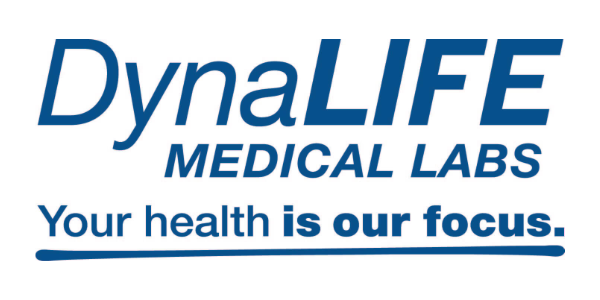There’s a lot riding on
your prostate health…
KNOW THE SCORE.
your prostate health…

ClarityDX Prostate uses clinical and blood-based biomarkers to determine a patient’s risk of having clinically significant prostate cancer to help patients and their physicians make more informed healthcare decisions.

Better outcomes start from clarity.
When it comes to a cancer diagnosis, Clarity means peace of mind. And when it comes to prostate cancer detection, it takes the right data to deliver that Clarity.
ClarityDX Prostate is a clinically proven decision support tool that uses a machine learning platform to calculate an accurate prostate cancer risk score from clinical data and multiple blood-based PSA test results (5-7).
If you have an elevated PSA, or a suspicion of prostate cancer, ClarityDX Prostate may be right for you. ClarityDX Prostate takes the fear and uncertainty out of prostate cancer screening.
Order ClarityDX Prostate Today
To order the ClarityDX Prostate, please select the province where you will get your blood sample collected from the options below. Then, download the Requisition Package and follow the instructions within.
*ClarityDX Prostate is currently available in Alberta, British Columbia, Ontario, Saskatchewan and Quebec. If your province is not listed, it is not available there yet. We are actively working with sample collection laboratories to expand availability across Canada.
PSA testing alone doesn’t add up.
1 in 8 men will be diagnosed with prostate cancer in their lifetime. The good news is that when detected early, prostate cancer is one of the most successfully treated types of cancer (1).
The challenge is that the current method of screening – the prostate-specific antigen (PSA) test, looks at just one data point in a complex equation. The test measures levels of PSA, a protein made in the prostate, and flags higher levels for prostate cancer risk and further testing, including biopsy (2-4).
Elevated PSA levels can indicate prostate cancer, but these higher levels can also be caused by vigorous exercise, recent sexual activity, a prostate infection, etc. In fact, biopsies show most ‘positive’ PSA tests are not indicative of clinically significant prostate cancer on their own (2-4).
The result is that patients may opt for unnecessary, invasive prostate biopsies and treatments with potentially harmful side effects. There is a better way.
ClarityDX Prostate Patient Journey

How does ClarityDX Prostate work?
ClarityDX Prostate uses a proprietary machine-learning algorithm and data from two blood-based biological markers with up to five clinical biomarkers to generate an accurate risk score for aggressive prostate cancer (5-7).
Because ClarityDX Prostate uses lab data from a patient’s PSA blood test, it can be added to the healthcare pathway with minimal inconvenience to patients and low cost to the healthcare system.
ClarityDX Prostate can be utilized at multiple stages in the patient care path to inform the decision to biopsy.
ClarityDX Performance
Performance characteristics for ClarityDX Prostate models using up to five clinical features for predicting grade group 2 and above prostate cancer:

**AUC: Area Under the Curve is used as a quantitative measurement of accuracy.
Frequently Asked Questions
Taking ClarityDX Prostate:
Other FAQs:
OUR PARTNERS
Contact us
CITATIONS & ADDITIONAL NOTES
1) Sung et al. (2021) Cancer J. Clin. 71, 209–249.
2) Dickinson et al (2016) CMAJ Open 4:E73-E79.
3) McLaughlin et al: (2024) Scientific Reports 14:5810.
4) Van Poppel et al: (2022) Nature Reviews Urology 19:562-572.
5) Hyndman et al. (2024) npj Digital Medicine 7, 163. 10.1038/s41746-024-01167-9.
6) Wallis et al. (2024) .JCO 42, e17105-e17105. https://ascopubs.org/doi/abs/10.1200/JCO.2024.42.16_suppl.e17105
7) Hyndman et al. (2024) Can Urol Assoc J 18 (6Suppl). doi.org/10.5489/cuaj.8826 MP 1.13
DISCLAIMER
The performance characteristics of ClarityDX Prostate were determined by Nanostics in a population primarily between 40 to 75 years of age with PSA ≥3 ng/mL. PSA and free PSA tests are indicated for men between ≥50 years of age; caution required when interpreting individual PSA and free PSA results in patients below 50 years of age. Accuracy may be influenced by PSA-altering drugs such as 5-alpha reductase inhibitors. Patient management should be based on holistic clinical judgment. ClarityDX Prostate has not been cleared or approved by the U.S. Food and Drug Administration (FDA) or Health Canada. ClarityDX Prostate is intended to aid physicians in the decision for subsequent diagnostic testing such as prostate biopsy or imaging.
CPSA Accredited Laboratory
Nanostics has an accredited laboratory at 10150 102 Street, Edmonton, AB T5J 5E2 under the College of Physicians and Surgeons of Alberta to perform total PSA, free PSA, and ClarityDX Prostate® measurements.




















